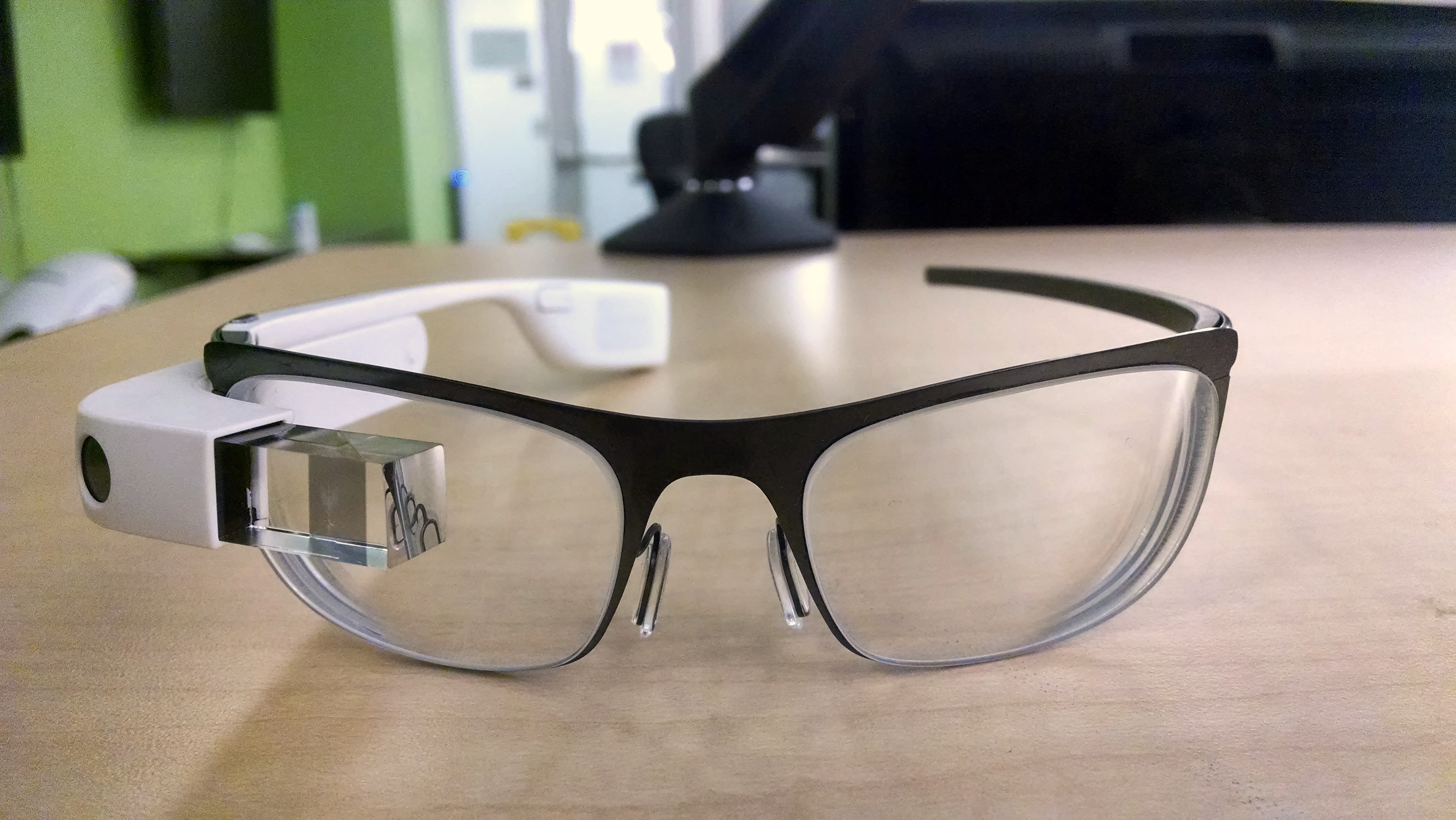Google Glass is an innovative leap into the world of wearable technology, offering users a unique augmented reality experience. Priced at $1,500 in the US and £1,000 in the UK, this device has sparked considerable debate about its value compared to alternatives in the smart glasses market. Despite its futuristic appeal, many potential buyers are deterred by the hefty price and the uncertainty surrounding future updates. In a recent survey, a noticeable preference for smartwatches over computing glasses emerged, highlighting the competing interests within the technology trends among consumers. However, Google Glass remains a notable competitor, appealing primarily to those curious about the integration of smart glasses into their daily lives.
The realm of augmented reality eyewear is rapidly evolving, with devices like Google Glass leading the charge in the wearable tech landscape. As consumers weigh their options in the smartwatch vs Google Glass debate, it’s evident that preferences vary significantly. While many gravitate towards the practicality of smartwatches, a distinct audience is captivated by the immersive potential of smart specs. Recent trends indicate a growing interest in wearable devices, yet the market remains divided, with some users leaning towards health and fitness functions and others seeking entertainment and connectivity features. Understanding these dynamics is crucial for anyone looking to dive into the exciting world of modern wearable technology.
Understanding Google Glass: A Smart Glass Innovation
Google Glass represents a significant leap in wearable technology, specifically in the realm of smart glasses. Essentially, this initiative aims to integrate augmented reality seamlessly into everyday life, permitting users to access information hands-free. Despite its innovative technology, Google Glass retailing at $1,500 in the U.S. and £1,000 in the U.K. raises eyebrows. Many potential users are deterred not only by the price tag but also by the concern of evolving technology—users worry that advancements will render their devices outdated quickly.
Yet, the allure of Google Glass is undeniable. It creates a futuristic experience, merging digital information with the physical world through innovative features and applications. Users can access notifications, navigation, and even social media updates in a manner reminiscent of science fiction. However, the specter of social acceptance looms large, as many users might feel self-conscious about the device’s appearance, potentially hindering its widespread adoption and the growth of the smart glasses market.
Smart Glasses vs. Smartwatches: Market Preferences Revealed
A recent survey conducted by Crittercism unveiled fascinating insights into consumer preferences regarding wearable technology, highlighting a clear preference for smartwatches over smart glasses like Google Glass. According to the poll, 54 percent of respondents expressed a preference for smartwatches, which are often perceived as more practical and stylish accessories to enhance daily life. This trend indicates a challenging market environment for smart glasses, as users prioritize devices that cater to their interests in fitness, health, and everyday utility. Furthermore, smartwatch enthusiasts appear to favor functional features that align with their lifestyle needs.
In contrast, those interested in smart glasses often seek a more niche set of functionalities such as access to entertainment and social media. The disparity in gender interest also plays a key role, with men demonstrating significantly more enthusiasm for Google Glass than women. This difference in preferences suggests manufacturers need to consider their target audience carefully, focusing on how to bridge the gap between needs for health-related apps—popular among smartwatch users—and the unique benefits offered by smart glasses.
Frequently Asked Questions
What are the main features of Google Glass compared to smartwatches?
Google Glass offers an augmented reality experience and hands-free access to information, whereas smartwatches primarily focus on fitness tracking, notifications, and health monitoring. While both are under the umbrella of wearable technology, Google Glass provides unique functionalities such as camera capabilities and real-time data display.
Is Google Glass suitable for everyday use like smartwatches?
While Google Glass provides advanced features, its social acceptance is currently lower than smartwatches. Many users feel self-conscious wearing Google Glass, which may deter them from using it in everyday situations, unlike smartwatches that are widely accepted as fashionable and functional devices.
Why are smartwatches more popular than Google Glass in the wearable technology market?
Recent surveys indicate that many users prefer smartwatches over Google Glass due to their practicality, lower price point, and alignment with fitness interests. In fact, 54% of those interested in wearable technology favored smartwatches, reflecting a significant trend in the wearable technology market.
How do Google Glass and smartwatches compare in terms of target demographics?
The audience for Google Glass tends to be predominantly male, with 71% of those interested in smart specs being men. In contrast, there is a more balanced interest among both genders for smartwatches, with women showing slightly more preference for smartwatches due to their health and fitness applications.
What types of apps are more popular among Google Glass users compared to smartwatch enthusiasts?
Google Glass users have shown a higher interest in apps related to news, entertainment, and social media, whereas smartwatch users prefer health and fitness apps. This indicates that the functionality of smart glasses caters to different use cases than traditional smartwatches.
Are there concerns about the future of Google Glass in the evolving smart glasses market?
Yes, there are concerns regarding potential future modifications to Google Glass and whether users will need to invest in new models frequently, similar to what has happened with other technology. This lack of future-proofing combined with a high price tag may hinder its acceptance in the smart glasses market.
What technology trends are shaping the future of wearable technology like Google Glass and smartwatches?
Emerging technology trends such as augmented reality integration, health tracking innovation, and user-friendly interfaces are shaping the future of wearable technology. As user preferences evolve, both smart glasses and smartwatches will continue to adapt to meet consumer needs.
How does the price of Google Glass compare with that of smartwatches?
At a price of $1,500 in the US and £1,000 in the UK, Google Glass is significantly more expensive than most smartwatches. This pricing difference can be a barrier to entry for many consumers who may opt for more affordable smartwatches that offer valuable health tracking and notification features.
| Aspect | Details |
|---|---|
| Availability | Google Glass is available for purchase in the US and UK. |
| Price | The price is $1,500 in the US and £1,000 in the UK, which might deter potential buyers. |
| Future Upgrades | Future modifications may require existing users to pay full price for new models. |
| User Perception | Users may feel like futuristic cyborgs but may also perceive themselves as looking geeky. |
| Market Interest | A survey showed 54% preferred smartwatches versus 26% preferring smart glasses. |
| Gender Interest | Men showed more interest in Glass (71%) compared to women (29%). |
| App Preferences | Smartwatch users prefer health and fitness apps; Glass users prefer news and entertainment. |
Summary
Google Glass represents a significant innovation in wearable technology, now available for purchase at a premium price. Despite its cutting-edge features, concerns regarding cost and aesthetic acceptance pose challenges for potential users. Additionally, the survey results highlight a stronger market preference for smartwatches, indicating that while Google Glass has potential, it will need to overcome significant hurdles to broaden its appeal. As the wearable tech landscape evolves, the debate continues: is Google Glass more appealing than smartwatches?




